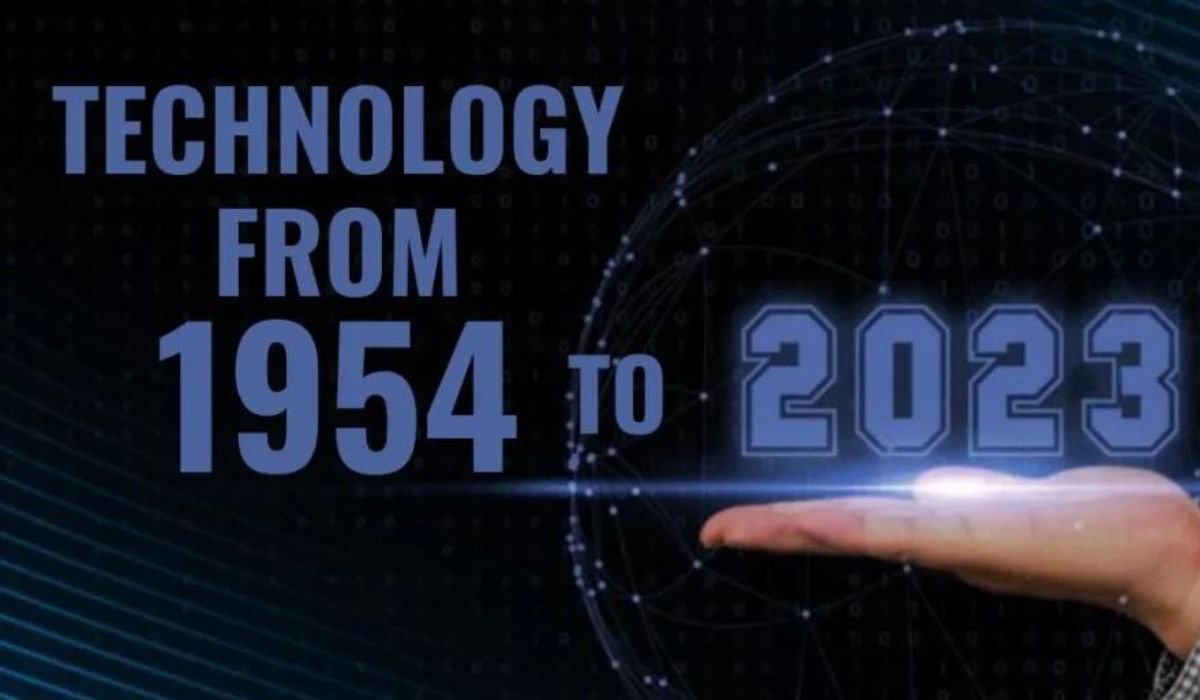Introduction
The period from 2023-1954 marks a transformative era in both technology and society. This time frame encapsulates significant advancements that have shaped our modern world, influencing everything from communication to civil rights. As we explore this unique decade, we will highlight key innovations and trends that have left an indelible mark on our lives.
Technological Breakthroughs: A New Era of Innovation
The Transistor Revolution
One of the cornerstones of modern electronics is the transistor, invented in the late 1940s. This small device revolutionized technology by enabling the miniaturization of circuits and drastically reducing power consumption. Transistors replaced vacuum tubes, making devices smaller, more reliable, and more efficient.
- Impact on Electronics: The transistor is foundational to virtually all electronic devices, including radios, televisions, and computers.
- Economic Growth: The mass production of transistors stimulated the growth of the electronics industry, leading to job creation and innovation.
Rise of Computers
The evolution of computers during this period laid the groundwork for the digital age. Early computers, such as the ENIAC and UNIVAC, emerged from research conducted during World War II.
- Applications: Initially used for military calculations and scientific research, computers quickly found applications in various sectors, including business and education.
- Programming Languages: The development of programming languages in the 1950s made computers more accessible to a broader range of users.
Space Exploration
The Cold War era spurred significant advancements in space exploration, leading to the launch of satellites and manned missions.
- Sputnik: The Soviet Union’s launch of Sputnik in 1957 marked the beginning of the space race, igniting global interest in science and technology.
- Technological Impact: Space exploration led to innovations in materials, telecommunications, and navigation systems, many of which we still use today.
Communication Revolution
The advancements in communication technology transformed how people connect and share information.
- Television: By the 1950s, television became a dominant medium, shaping public opinion and culture.
- Early Internet: The groundwork for the internet was laid during this decade, leading to a future where global communication would become instantaneous.
Social and Cultural Shifts: A Changing World
Civil Rights Movement
The civil rights movement was a defining aspect of the social landscape during this period. Activists fought against racial discrimination and inequality, striving for justice and equal rights.
- Key Events: Landmark events, such as the Montgomery Bus Boycott and the March on Washington, galvanized public support and brought attention to civil rights issues.
- Legislation: The Civil Rights Act of 1964 and the Voting Rights Act of 1965 were significant milestones that emerged from this movement.
Cultural Changes
The 2023-1954 era also saw profound cultural shifts that reflected changing societal norms.
- Music and Art: The rise of rock ‘n’ roll and other musical genres symbolized youth rebellion and cultural change.
- Gender Roles: The post-war period began to challenge traditional gender roles, laying the groundwork for future feminist movements.
Global Events
This decade was not only about technological and social advancements but also about significant global events that shaped the world.
- World Wars: The aftermath of World War II influenced geopolitical relations and sparked movements for decolonization worldwide.
- Economic Crises: Economic fluctuations in various countries prompted discussions about globalization and economic policies.
The Rise of Artificial Intelligence: A New Frontier
Early AI Developments
The origins of artificial intelligence (AI) trace back to this decade, with early research focusing on machine learning and problem-solving.
- Pioneering Work: Figures like Alan Turing and John McCarthy laid the groundwork for AI, theorizing how machines could mimic human intelligence.
- Turing Test: Turing’s concept of a machine’s ability to exhibit intelligent behavior similar to a human became a foundational principle in AI research.
AI Applications
As the technology matured, AI began to find practical applications in various fields.
- Healthcare: AI algorithms started assisting in medical diagnoses and treatment plans, improving patient outcomes.
- Finance: In finance, AI systems began analyzing market trends, helping investors make informed decisions.
Ethical Considerations
As AI technology advanced, ethical considerations emerged regarding its impact on society.
- Privacy Concerns: The use of AI in data collection raised questions about user privacy and consent.
- Job Displacement: Automation led to fears of job losses, prompting discussions about the future of work.
Information Management Trends: A Digital Revolution
Data Growth and Storage
The explosion of data generated by technological advancements necessitated innovations in data storage solutions.
- Storage Technologies: From magnetic tapes to floppy disks, storage technology evolved rapidly, allowing for greater data retention and retrieval.
- Big Data: The rise of big data analytics marked a shift in how organizations approached data-driven decision-making.
Big Data Analytics
The ability to analyze large datasets transformed industries, enabling insights that were previously unattainable.
- Applications: Businesses began using analytics to improve marketing strategies, optimize operations, and enhance customer experiences.
- Impact on Research: In scientific research, big data analytics accelerated discoveries and innovations.
Cloud Computing
Cloud computing emerged as a game-changer for data storage and accessibility.
- Advantages: It allowed organizations to store data remotely, reducing costs associated with physical infrastructure and enhancing collaboration.
- Widespread Adoption: As businesses adopted cloud solutions, data management practices transformed, leading to greater efficiency and flexibility.
The Convergence of Senses: A Smart Future
Multi-sensory Technologies
Technological advancements began to incorporate multiple senses, enhancing user experiences.
- Haptic Feedback: Devices that provide tactile feedback created a more immersive interaction for users, particularly in gaming and virtual environments.
- Voice Recognition: The development of voice-activated systems opened new avenues for interaction with technology.”2023-1954″
Augmented and Virtual Reality
Augmented reality (AR) and virtual reality (VR) technologies started gaining traction, revolutionizing various industries.
- Applications in Training: Both AR and VR found applications in training and education, offering immersive learning experiences.
- Entertainment: The gaming industry embraced VR, creating experiences that transported users into virtual worlds.
Internet of Things (IoT)
The growth of the Internet of Things (IoT) represented a significant leap in connectivity.
- Smart Devices: Everyday objects began to connect to the internet, enabling users to control them remotely and gather data for analysis.
- Impact on Daily Life: IoT devices simplified tasks and improved efficiency, paving the way for smarter homes and cities.
You May Also Like: KrogerFeedback: Share Your Insights and Drive Change
Conclusion
The period from 2023-1954 was marked by profound technological advancements and significant social changes. From the invention of the transistor to the rise of artificial intelligence, this decade laid the groundwork for our current technological landscape. As we reflect on these developments, it’s clear that the innovations of this era continue to influence our lives today, shaping the way we communicate, interact, and understand the world around us.
FAQs
What significant technological advancements occurred between 2023 and 1954?
Major advancements included the invention of the transistor, the rise of computers, and early developments in artificial intelligence.
How did the civil rights movement impact society during this time?
The civil rights movement brought attention to racial discrimination and led to significant legislative changes promoting equality.
What role did space exploration play in technological development?
Space exploration spurred innovations in telecommunications, materials science, and global collaboration in science.
How did the concept of artificial intelligence emerge in this era?
Early AI research focused on machine learning and problem-solving, laying the groundwork for modern AI applications.
What is the significance of big data analytics in today’s world?
Big data analytics allows organizations to make data-driven decisions, improving efficiency and enhancing customer experiences.










